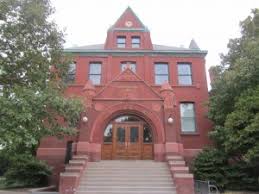Architecture Program

Architecture Program: Faculty Scholarly and Creative Activity
Document Type
Article
Date of this Version
Summer 2016
Citation
From Architecture Boston, Volume 19 no. 3 (Fall 2016, pp. 7-8.
Abstract
“Urban mining” (in “Source material”) may be a new term, but we have a long history of repurposing layers of a building that has become obsolete. Ise Shrine in Japan is rebuilt every 20 years; each time, dismantled columns, beams, and other components are bestowed upon other shrines, which reuse them in high veneration. The Coliseum had been a mine for stone and metal since the fourth century, and in 1452, Pope Nicholas V, intending to rebuild Rome, reportedly removed 2,522 cartloads damaged by an earlier earthquake. The ancient arena’s travertine can be found in buildings throughout the city.
In 16th-century England, King Henry VIII took lead from roofs and gutters of monasteries, then sold the properties to fund military campaigns. At Fountains, near York, the purchaser’s son had his residence constructed on the monastic grounds, sourcing materials from abbey buildings, including a spiral staircase that was kept intact. At Castelvecchio in Verona, Italy, the courtyard façade’s door and the window frames and balconies we see today have existed since the 1920s, brought from a Gothic palazzo demolished earlier.
Granted, our times are politically and economically different. Yet, with a renewed mindset, we can find value and beauty in the reappropriation of buildings’ layers.


Comments
Published by The Boston Society of Architects.